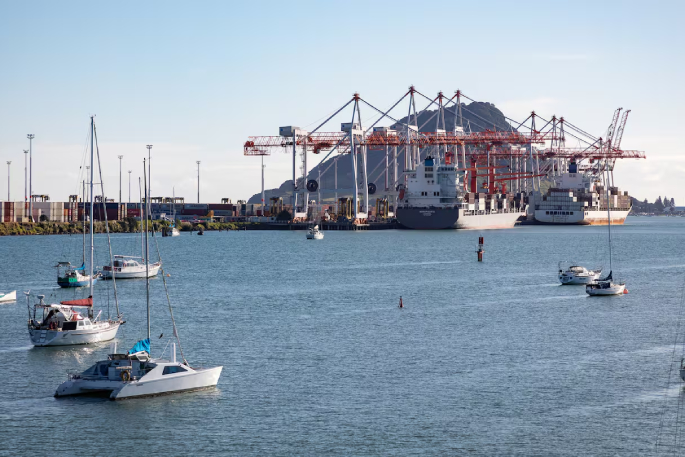Based on improving cargo volumes in the first quarter of the 2025 financial year, NZX-listed Port of Tauranga expects full-year underlying net profit after tax to be between $110 million and $120m.
This compares to FY24′s underlying profit result of $102.7m.
Chief executive Leonard Sampson told Friday’s annual meeting in the three months to September 30, total trade increased 7.6% in volume compared to the same period last year.
Container volumes increased 17% to 292,860 TEUs.
Sampson said the country’s biggest port and main export gateway continued to demonstrate resilience through its diversity of cargo and income streams.
“After a sharp drop in cargo volumes this time last year, we’re pleased to see some recovery.”
Import volumes reflected slightly stronger domestic consumption, increasing 6.8% in volume to 2 million tonnes for the quarter.
Exports increased 8.1% in volume to 4.2 million tonnes.
“We are cautiously optimistic that the second half of the financial year will see slow improvement in cargo volumes, after a particularly challenging 2024 financial year,” Sampson said.
“However, global disruption, low international commodity prices and the nascent domestic economic recovery are expected to continue to impact the port for many months to come.”
Port of Tauranga handles 32% of New Zealand’s total exports and imports, by both volume and value. It facilitates just under half of all total export trade by value at 47%.
Sampson told the meeting the second half FY24 had seen a marked turnaround in cargo volumes which bounced back despite the economic downturn reducing demand for imports and challenging export commodity prices.
“Despite these fluctuations in cargo volumes, and the fact that only 30% of container vessels are arriving on schedule , our continuous focus on operational performance has seen positive improvements in service delivery to our customers.
“Productivity improved with container moves per crane per hour increasing by 7.9% to just over 30 moves per hour. This compares with the national average of 25, and the average of the top five Australian ports of 24 moves per hour.”
Sampson said one year on from its official opening, the company was pleased with the progress of the Ruakura Inland Port, its joint venture in Hamilton with Tainui Group Holdings. Trains running to and from Port of Tauranga and MetroPort in Auckland now called daily at the inland port.
Earthworks were underway on stage 2, creating an empty container depot adjacent to the facility. The inland port was on track to handle around 25,000 TEUs in 2025.
In other developments, the port company was assessing the recently announced fast-track legislation as an option to speed up the Stella Passage project consenting process.
“The Stella Passage port development is both regionally and nationally important and is particularly urgent at the Sulphur Point container terminal as we reach the current limits of our existing berth capacity.
“While we wait for the necessary consents, we are continuing to pursue plans to introduce a level of automation into the container terminal following the berth extension. Despite this project being delayed, we have developed the necessary electrical infrastructure and are close to vendor selection.”
Sampson said the port would continue to see the impacts of softer commodity prices, as well as the escalating geopolitical instability, trade tensions and ongoing conflicts in the Red Sea.
“With the exception of kiwifruit, a number of key export commodities are forecasted to be relatively flat in volume over the next five years, after a decade of pre-Covid growth.
“However, the forecasted population increases in the Upper North Island over the next two decades, represent a significant opportunity for growth in imported cargoes.
“To support this growth in population, we must have all three ports – Tauranga, Northport and Auckland – operating at maximum efficiency, supported by a network of rail-enabled inland ports to create a resilient sustainable upper North Island supply chain.”
Andrea Fox joined the Herald as a senior business journalist in 2018 and specialises in writing about the $26 billion dairy industry, agribusiness, exporting and the logistics sector and supply chains.



0 comments
Leave a Comment
You must be logged in to make a comment.